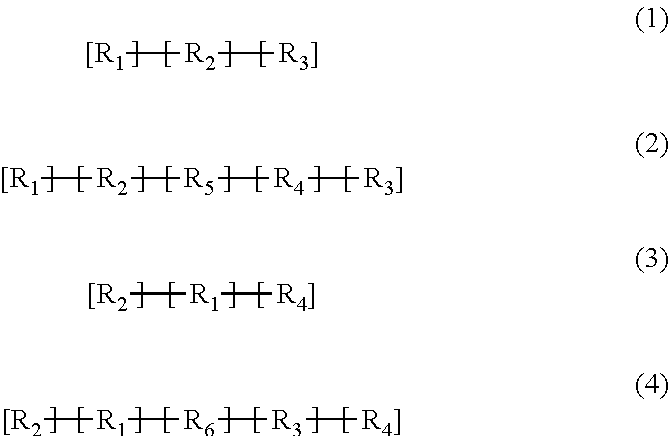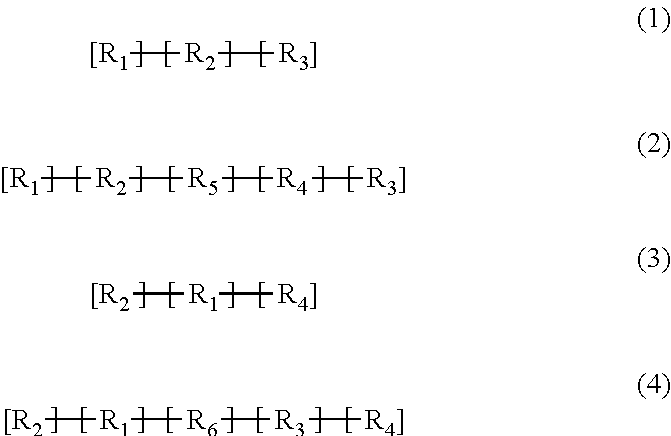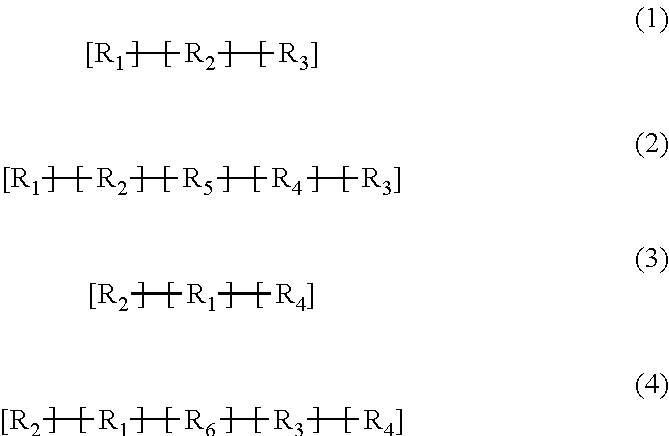Implantable electrode comprising a conductive polymeric coating
a polymer coating and implantable electrode technology, applied in the field of coating electrodes, can solve the problems of tissue injury, metal oxide and metal nitride coatings are still mechanically hard, and common metal oxide electrode coatings become increasingly destabilized
- Summary
- Abstract
- Description
- Claims
- Application Information
AI Technical Summary
Benefits of technology
Problems solved by technology
Method used
Image
Examples
example 1
Preparation of a Polymerization Mixture Comprising EDOT, SPSEBS, and PSS
[0187]A conducting polymer precursor solution (100 mL) was prepared comprising EDOT (0.015M) in water in a glass beaker. The beaker was placed on a magnetic stir plate, and a magnetic stir bar was used to stir the mixture at a speed fast enough to create a vortex in the center of the mixture, but not so fast that the mixture developed bubbles. While the mixture was being stirred, PLURONIC F68 10% solution (125 μL) was slowly added to stabilize the mixture.
[0188]After constant stirring at room temperature for approximately 12 hours, the aqueous EDOT mixture was fully transparent, with no visible globules of undissolved EDOT.
[0189]An aqueous solution comprising 30% v / v of polystyrene sulfonate (average molecular weight 70,000) was then added to the aqueous mixture (125 μL)
[0190]Following addition of the polystyrene sulfonate solution, a solution of sulfonated polystyrene-block-poly(ethylene-r-butylene)-block-polys...
example 2
Preparation of a Polymerization Mixture Comprising EDOT, SPSIBS, and PSS
[0192]A conducting polymer precursor solution (100 mL) was prepared comprising EDOT (0.015 M) in a combination of water and acetonitrile (1:1 volumetric ratio) in a glass beaker. The beaker was placed on a magnetic stir plate, and a magnetic stir bar was used to stir the mixture at a speed fast enough to create a vortex in the center of the mixture, but not so fast that the mixture developed bubbles. While the mixture was being stirred, PLURONIC F68 10% solution (125 μL) was slowly added to stabilize the mixture.
[0193]After constant stirring at room temperature for approximately 12 hours, the aqueous EDOT mixture was fully transparent, with no visible globules of undissolved EDOT.
[0194]An aqueous solution comprising 30% v / v of polystyrene sulfonate (average molecular weight 70,000) was then added to the aqueous mixture (125 μL).
[0195]Following addition of the polystyrene sulfonate solution, a solution of polysty...
example 3
Preparation of a Polymerization Mixture Comprising EDOT and EDOT-Acrylate
[0197]A conducting polymer precursor solution was prepared using a combination of EDOT and EDOT-acrylate. A combination of EDOT (0.001 g) and EDOT-acrylate (0.001 g) was added to a solvent solution (125 μL) comprising water and acetonitrile in a 1:2 vol:vol ratio.
[0198]The beaker was placed on a magnetic stir plate, and a magnetic stir bar was used to stir the mixture at a speed fast enough to create a vortex in the center of the mixture, but not so fast that the mixture developed bubbles. While the mixture was being stirred, PLURONIC F68 10% solution (125 μL) was slowly added to stabilize the mixture.
[0199]After constant stirring at room temperature for approximately 12 hours, the aqueous EDOT / EDOT-acrylate mixture was fully transparent, with no visible globules of undissolved polymer.
[0200]An aqueous solution comprising 30% v / v of polyanetholesulfonic acid (average molecular weight 10,000) was then added to t...
PUM
| Property | Measurement | Unit |
|---|---|---|
| Tg | aaaaa | aaaaa |
| Tg | aaaaa | aaaaa |
| mole percent | aaaaa | aaaaa |
Abstract
Description
Claims
Application Information
 Login to View More
Login to View More - R&D
- Intellectual Property
- Life Sciences
- Materials
- Tech Scout
- Unparalleled Data Quality
- Higher Quality Content
- 60% Fewer Hallucinations
Browse by: Latest US Patents, China's latest patents, Technical Efficacy Thesaurus, Application Domain, Technology Topic, Popular Technical Reports.
© 2025 PatSnap. All rights reserved.Legal|Privacy policy|Modern Slavery Act Transparency Statement|Sitemap|About US| Contact US: help@patsnap.com



